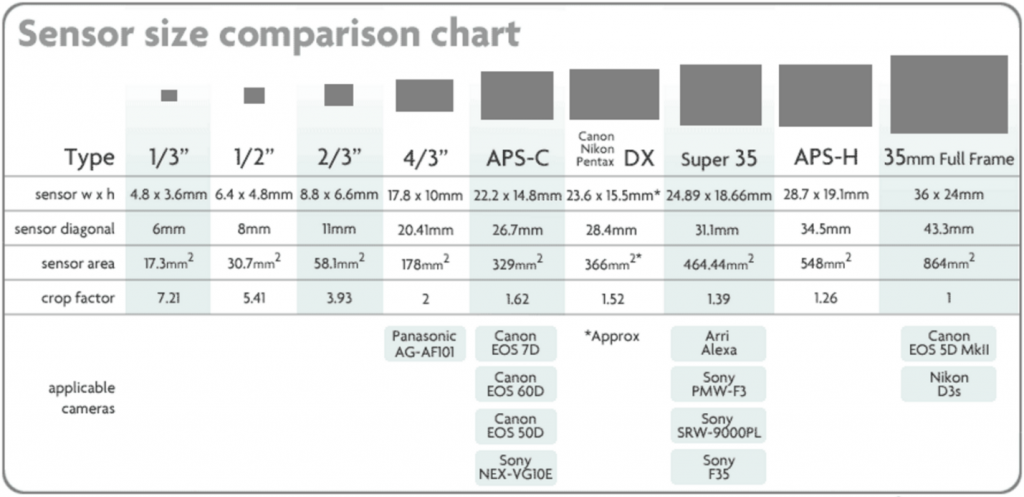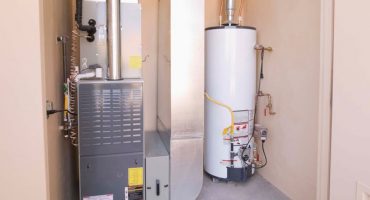The camera in the smartphone is a familiar, everyday affair. The sharp jump in camera technology over the past 5 years has introduced photography into every area of human life. Few people took photographs of 20 photographs of a coffee cup during the time of film equipment, but now it is a commonplace. You can take pictures of everything, the lens is integrated everywhere. But when it comes to how to choose a good camera to achieve high-quality images, some of the categories of cameras are no longer needed, it is necessary to choose equipment based on the tasks being solved.
Parameters affecting the class and cost of the camera
The quality of the camera is determined by two main components:
- The physical size of the matrix. The matrix is an analog of a film frame. Just as light previously fell on a film frame and left an image, so what the lens sees is projected onto the matrix. The matrix consists of photosensitive elements, which are called pixels. Currently, the number of pixels in the cameras for everyday shooting (it is customary to hear “megapixels”) is often just a marketing ploy.
The principle is simple: the larger the matrix, the cleaner and better the final image. Cameras with matrix sizes are available on the market:
- Full-frame (the matrix corresponds to the size of the film frame - 35 x 24 mm.);
- APS-C (approximately 24 x 16 mm.);
- 4/3 "(18 x 13.5 mm.);
- 2/3 "(8.8 x 6.6 mm.);
- 1 / 1.8 "(7.2 x 5.3 mm.);
- 1/2 ”(8 x 4.3 mm.);
- 1/2 ”(5.4 x 4.0 mm.);
- 1 / 3.2 "(4.5 x 3.4 mm.).
The difference in the final image in cameras with matrices of neighboring sizes will be practically not noticeable, since only people who are keen on photography can see it. In addition, the device software also contributes to the acquisition of the image, improving its characteristics.
The larger the matrix, the larger the lens is needed to work with it, and the larger the camera will be. It is only natural that the price of the camera will be higher from this.
- Lens. Light is the source of the image. The camera does not capture the image itself; it captures the light reflected from objects. Therefore, it is important to bring light to the matrix without loss. Since light passes through the lens system, special requirements are put forward for their quality. Not every lens is glass, contrary to the majority opinion. Most of the budget segment cameras offer plastic lenses to reduce prices.
In addition to the amount of light, the lens should provide minimal distortion, defects, as the light is repeatedly refracted and re-reflected, passing through a system of glasses.
Both matrix size and lens quality are usually related to each other. Not to find a manufacturer who will offer a camera with professional optics and a budget matrix, as well as vice versa.
Types of Cameras
Globally, digital cameras are divided into SLR and mirrorless. From the name it becomes clear that in mirrorless there is no mirror that transmits the image to the viewfinder. Although both types do not differ in image quality, if we talk about a device with a full-frame or APS-C matrix, recently there has been a trend of widespread mirrorless distribution.The fact is that a mirror in the conditions of nanotechnology is no longer needed, and soon it will disappear as unnecessary. But today, lovers of good images are armed with SLR cameras.
SLR Cameras
When talking about SLRs, then, as a rule, we are talking about passion for photography at an amateur, semi-professional or professional level. Just on such categories and divide SLRs.

Figure 2: SLR cameras
The best professional SLR cameras have, with rare exceptions, a 35 x 24 mm format matrix. They are protected from adverse conditions, less prone to breakdowns, have a longer shutter life, fewer plastic parts, a backup memory card slot and other features that allow people to work without fear not to get the result. All this costs money, but not small.
Among manufacturers of DSLRs, including professional ones, TOP companies - Canon, Nikon and Sony stand out. Each of them has a flagship model, which is the best and most modern.
Canon EOS-1D X Mark II
The flagship of the Japanese company. Incorporated the most advanced technology. On board is a full-frame sensor with a resolution of 20.2 Mp, simultaneously two processors of the latest generation, ISO (photosensitivity) up to 51200 units (with an expanded ability up to 409600), rate of fire up to 14 frames / sec., Video in 4K format. It is strong, protected SLR camera suitable for professionals in cases where the price of an error or breakdown is very high. For reliability, you will have to pay 300,000 rubles, and this is only for the camera itself without a lens. This option is clearly not needed for everyday tasks.

Figure 3: Canon EOS-1D X Mark II
Canon EOS 5D Mark IV
The fourth modification of the legendary "five". This model also belongs to the professional segment, which has the characteristics relevant for 2018 and a sturdy case. The requirements are somewhat underestimated, but just enough to reach a compromise between price and quality. It is with 5D Mark IV that most people whose profession is associated with photography work with 5D. The camera performs all tasks with high accuracy, as it incorporates both modern and time-tested technologies. For this device, you need to pay an average of about 180,000 rubles for the Body version (without a lens).

Figure 4: Canon EOS 5D Mark IV
Canon EOS 5D Mark III
It is this model that is massive among photographers using Canon. For most of the tasks: filming in the studio, wedding photography, urban reporting, she was, is and will be. The model appeared in 2014, because it does not have some new technologies in stock, such as Dual Pixel. But even without them, the camera lacks functionality. Due to its price, the model is available to a wide range of people: from professionals to amateurs. First, it allows you to have it as a backup option, the second as the main one, giving a margin of quality. And even novice amateurs who want to switch to a full-frame system opt for the 5D Mark III, buying it with their hands. Then its price will be about 85,000 rubles. A copy from the store will have to pay 140,000 rubles.
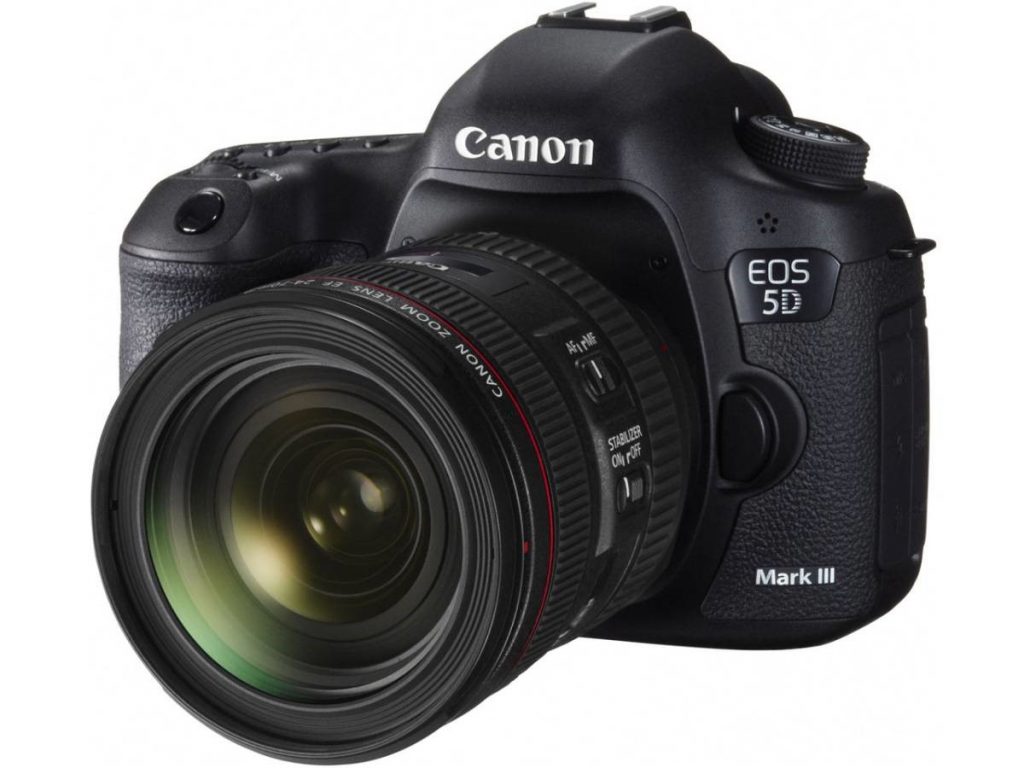
Figure 5: Canon EOS 5D Mark III
Speaking about Nikon and Sony SLR cameras, it is necessary to understand that all three companies under consideration, being direct competitors to each other, offer products with approximately the same functionality. The choice of users is determined to a greater extent by their personal attitude to the manufacturer, and most importantly by the presence of a set of optics and other equipment of a particular company. Switching from one system to another is difficult and costly since lenses, flashes, batteries, and other products are not interchangeable. Each company has a flagship, and there is a model on a simpler level, for the mass amateur.
Nikon D5
Best at the moment from Nikon. Powerful processor, tenacious autofocus, dust and moisture protection, record sensitivity of the matrix. All the characteristics of this device allow us to say that the D5 is on par with new technologies and its closest competitors.This camera is for professionals, for those who have a job - taking pictures. Like the Canon EOS-1D X Mark II, the camera is designed for use in extreme conditions, reporting news shooting, when each frame is important and extremely valuable. The cost of the device for the body version is about 400,000 rubles. This is 30% more expensive than the flagship from Canon. Of course, such a device is not needed for everyday shooting.

Figure 6: Nikon D5
Sony A99 II
What does Sony offer for professionals? Sony A99 II - released in 2016, the flagship. It is worth noting that Sony pays more attention to mirrorless cameras, because the SLRs of this company are somewhat less competitive. But taking into account the price of 240,000 rubles and the sensor at 43 MegaPixels, the device can and competes at a decent level. All the attributes of a professional SLR camera are also with him.
Having considered professional options, it is necessary to note the more affordable full-frame models. These companies have models that both professionals and amateurs of the full frame enjoy with pleasure.

Figure 7: Sony A99 II
Professional SLR Rating
Nikon is considered a popular model D850. A less professional camera, but still not without such qualities, is a camera worth 200,000 rubles. There is a younger model D750, which can be purchased for 80 000 rubles. Both cameras have a full-format sensor and excellent image quality.
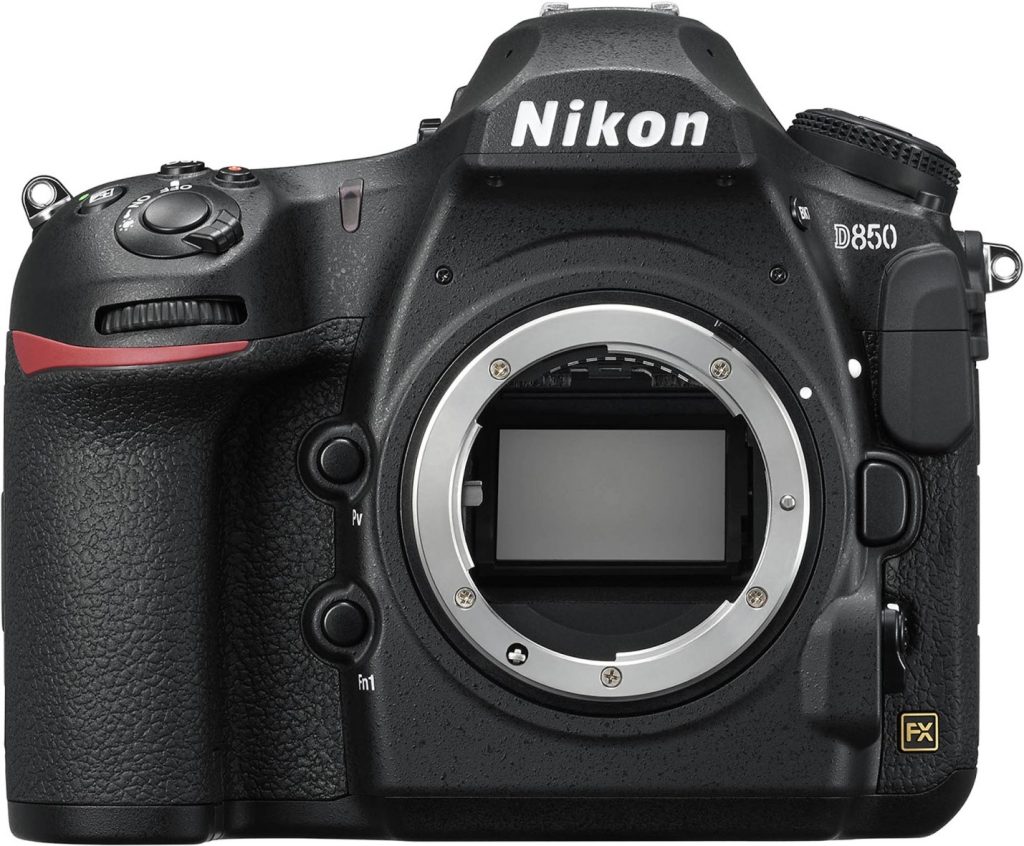
Figure 8: Nikon D850
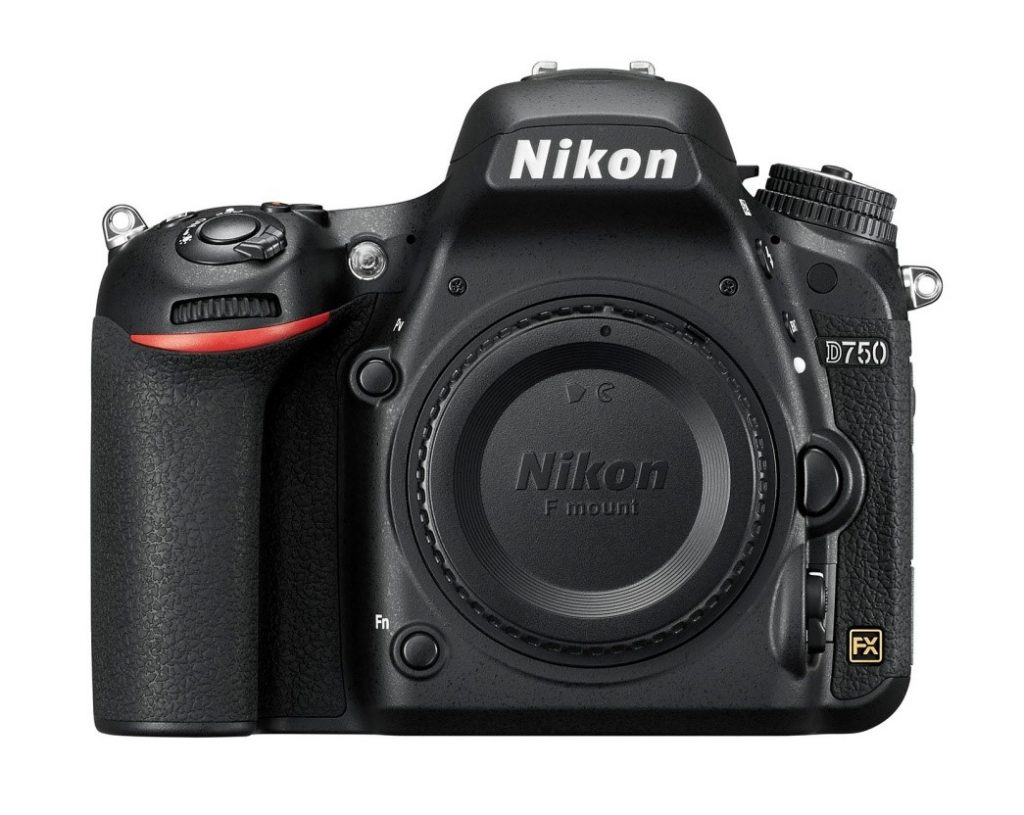
Figure 9: Nikon D750
But Sony, in addition to the A99 II, has only the first generation of this model. Due to the release of the second version A99I withdrawn from sales. All that remains is the purchase option with hands. Sony has no full-frame SLR cameras. But there are cropped and mirrorless ones.
APS-C Sensor DSLRs
As already mentioned, the best cameras with the Full frame matrix (full-format) serve as flagships and cameras for the advanced amateur. A full frame gives greater dynamic range, greater photosensitivity (as a result, less noise), high-quality blur and the true focal lengths of the lens.
To use SLR cameras in everyday life, widespread among everyone, cameras with a smaller matrix were created. Reducing the size of the sensor by some 1.5 or 2 times significantly reduced the cost of the camera as a whole, as well as the lenses for them.
For beginner photographers who want to know photo art, there is no need to save fabulous amounts on flagship models. As a rule, a budget of 35,000 rubles allows you to purchase a camera with a lens, a memory card, and even a bag and go to shoot from the threshold of the store.
This is exactly what the majority does, because cameras with an APS-C sensor perform a full range of functions, delighting users with the highest picture quality. Less shutter life, smaller sizes, fewer metal parts, less lens requirements, one memory card slot, the penultimate generation processor - this is the key to success, obtaining a high-quality device for little money.
Best SLR amateur cameras 2018
So, what good cameras of 2018 can be bought for 30-35 tr:
- Nikon D3500 - 30,000 rubles. with lens included;
- Canon 750D - 32000 rub. with lens included;
- Sony Alpha ILCA-68 - 50,000 rubles. with lens included (cheaper versions discontinued).
Mirrorless cameras
2018 is the heyday of mirrorless systems. More recently, professional full-frame models from most manufacturers saw the light. Ultramodern technologies at times improved focus and accuracy, rate of fire and frame size. However, the prices of such devices are expectedly sky-high. In the near future, professionals will be expected to switch from flagship DSLRs to mirrorless ones. But now, the ordinary user has a choice of decent models of mirrorless cameras for a reasonable price of up to 40 tr. Such cameras have removable lenses, but remain relatively compact.

Figure 10: Mirrorless Camera
The best mirrorless full frame cameras
- Canon EOS M50 Kit - 40 000 rubles .;
- Nikon 1 V3 Kit - 40 000 rubles .;
- Sony Alpha ILCE-6000 Kit - 36 000 rubles .;
- Fujifilm X-A20 Kit - 28 000 rubles .;
- Panasonic Lumix DMC-GX80 Kit - 38 000 rub.
What can these models do? Firstly, a distinctive feature of mirrorless cameras is the widespread use of an LCD screen. It is with the help of it that the process of composing the frame and tuning occurs. The screen allows you to focus and photograph already familiar to all ways - by touching in the right place, like on a smartphone. But since the constantly on screen consumes a lot of energy, the cameras have a familiar but electronic viewfinder. The matrix is typically APS-C format or 4/3 ”. This gives a plus for compactness and price, but does not affect quality. The latest generations of processors are doing their job - the output image is juicy, clear, realistic, high-quality.
If you need a high-quality camera, giving a picture of professional quality, for use on every day, on vacation, on vacation. Lightweight, compact version, with manual settings, shooting high-quality video, it is necessary to consider the options from the above list.
Soap dishes and ultrasounds
These two classes of cameras have a place to be and belong to mirrorless cameras. Of course, they did not and will not have a mirror, since the task of this class of devices is to take family photos, to be compact.
Soap dishes have reached their maximum. Of these, the quality was squeezed as much as possible, the size was reduced. Now you can carry the camera in your jeans or shirt pocket. However, there is one BUT!
People already carry smartphones in their pockets whose cameras are equal or better than soap boxes. The point of buying a compact camera is missing today. The only advantage of soap boxes is the presence of optical zoom (zoom), which smartphones lack.

Figure 11: Soap Box Digital Camera
Ultrasounds are another matter. Such cameras are compact, although for the most part they are not. The task of the ultrasound is to be universal. On the shelves of shops you can watch cameras with 50 or 60x zoom. This is incomprehensible for cameras with interchangeable lenses and large matrices. But for compacts with a matrix of the minimum size, such a zoom is possible.
Therefore, you can shoot a wide-angle landscape with one camera and bring the moon closer to the size that allows you to see craters.
In practice, picture quality remains mediocre. The image is obtained high-quality only in ideal conditions - during the day or using a tripod, or when photographing static objects.

Figure 12: Ultrasound Digital Camera
The best budget compact ultrasound cameras:
- Canon PowerShot SX40 HS - 20 000 rub. (35x zoom);
- Sony Cyber-shot DSC-HX400 - 24 000 rubles. (50x zoom);
- Nikon Coolpix B700 - 28 000 rub. (60x zoom);
- Panasonic Lumix DMC-FZ300 - 32 000 rub. (24x zoom).
Summary
As you can see, the market presents models for all needs. Everyone can take a photo today, as well as satisfy their needs as a picture. In order not to get confused, you need to remember:
- If you do not have to photograph often, and you need a camera at hand, then there is nothing better than a smartphone today;
- If photographing is necessary in different genres, including distant subjects, but the requirements for image quality are not great, then budget compact ultrasounds will come to the rescue;
- If you need picture quality, but compactness is also important - the choice is mirrorless with interchangeable optics;
- Love the photo? Want to manage all the nuances of the process? - There is no competitor to the DSLR primary and amateur segment;
- If everything has already been studied and appeared needed in a full frame - Full Frame devices of the initial professional segment;
- In the case when photography is work, there are flagship models.

